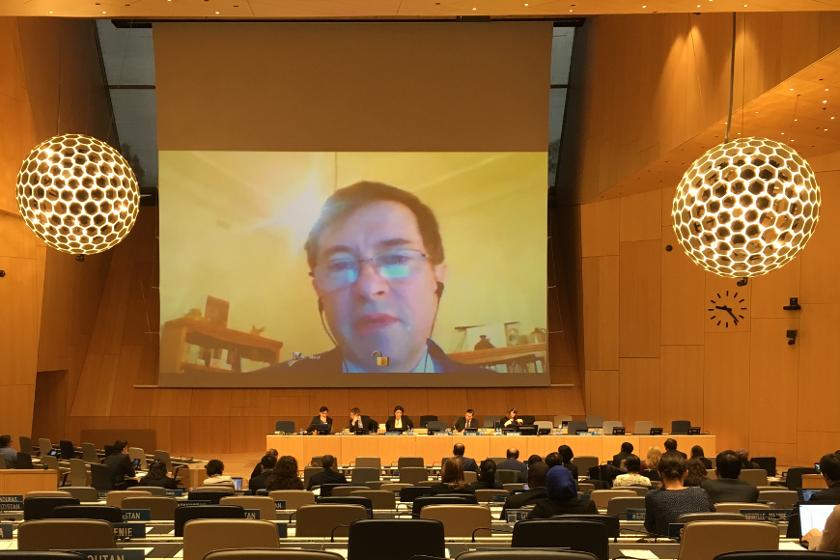Resale Right Reaches New Global Milestone with Prof Ricketson Study Presented at WIPO SCCR

The joint CISAC, EVA and GESAC campaign to promote the international adoption of the resale right has achieved a new milestone with the World Intellectual Property Organization (WIPO) and the Standing Committee on Copyright and Related Rights (SCCR). The campaign has been encouraging WIPO and its Member States to enter discussions on how to improve existing international rules on the resale right as well as address gaps in the Berne Convention through a new international instrument.
Meeting from 13-17 November in Geneva, the plenary heard from Melbourne University Law School Professor Sam Ricketson, who presented via web conference the academic study he had prepared for CISAC on the right. The visual artists' resale right ensures that creators receive a small percentage of the resale price when their works of art are resold by an auction house or an art gallery. It has been adopted by more than 80 countries.
Member State delegations have decided to dedicate a full day to the resale right prior to the next SCCR meeting to take place on 1-5 May 2017. This day is expected to generate more discussion through panels organised with creators, industry experts and society representatives in order to promote and increase understanding on this essential right for visual artists. This resale right day date is to be determined.
In speaking to the SCCR, CISAC Director General Gadi Oron stated,
The resale right is a very important right for visual artists. It offers a modest, but important, source of revenue for visual artists. And as also mentioned by the representative of France, the right also promotes transparency in the art market and allows creators to follow their works. Some artists will say that it helps them know ‘where their children are’ in the world.”
Gadi Oron also reiterated the goal of this campaign,
Our goal, our desire, as representatives of creators, is to guarantee, to any living visual artist or his/her descendants, a share in the proceeds from resale of their works, because it is only fair that when a work of art increases in value, the artist will also benefit from it, and not just the seller and the auction house.”
During Gadi Oron’s presentation, he emphasised that today’s art market is global. The problems visual artists face are global. The resale right is the global solution to a global issue.
Campaign partner EVA has been a main representative of visual artists in the introduction of the harmonised right in the European Union, including introducing the right to the United Kingdom in 2006. They have been pivotal in the harmonisation in Europe, which was concluded and applied in 2012 with regular meetings on national and EU levels of art market professionals and collective management organisations. EVA indicated as well that, in 2013, Christie’s Director for Asia declared, “Of course the resale right has no negative effect on the art market. It is a small amount added.”
In the United Kingdom, DACS has celebrated the 10th anniversary of the resale right in the UK. This has distributed 46.9 million Pound sterling to more than 3,900 artists and estates. In Australia, the resale right collections started in 2010. Up through October 2016, it generated more than 4.5 million Australian dollars for more than 1,275 artists.
EVA underscores the importance of resale right, “Art works are created, sold and resold without language barriers. They do not need translation to be understood in other countries and on other continents.”
